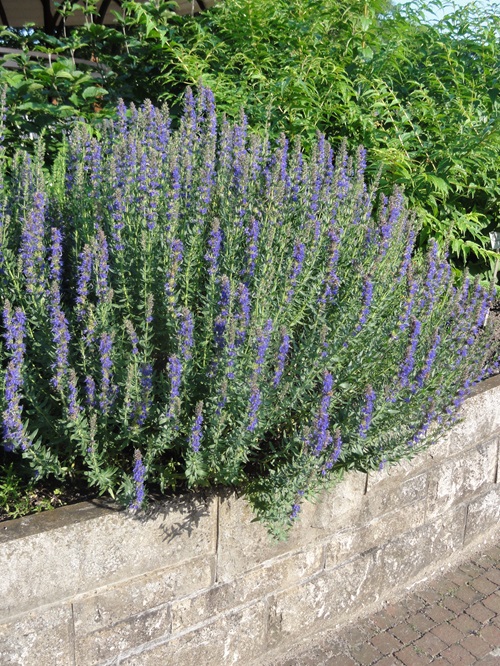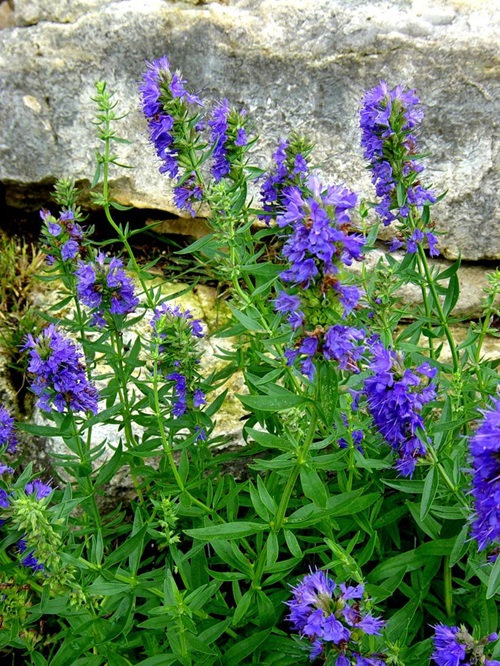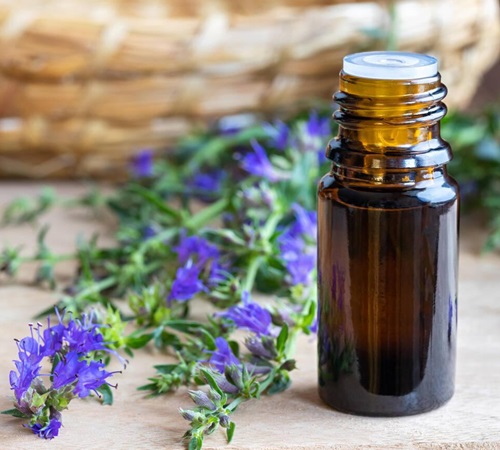Is Hyssop just a pretty plant or a magical healing herb for you and your garden? Discover its growing conditions, uses and benefits here!

This small woody shrub belonging to the mint family is grown for its fragrant, edible, and medicinal leaves and flowers. Growing hyssop has a host of health benefits and is also useful in maintaining a thriving, pest-free garden. Let’s dig in!
How to Grow Hyssop

Native to southern Europe and the Middle East, Hyssopus officinalis is a short-lived herb that resembles lavender. It has tiny purple and blue blooms on slender stems. However, unlike lavender, which has grayish silver foliage, it has broader and greener leaves.
This perennial herb is hardy in USDA zones 4-9. You can grow it directly from seed or stem cuttings. It prefers slightly alkaline soil and needs a pH between 6.5 and 8.0. Hyssop thrives in well-drained, fertile, loamy soil and enjoys full sun with some afternoon shade, especially in warm weather.
Blooming in fall, it relishes regular watering but tolerates drought and poor, sandy, dry soils once established. To grow, sow seeds in spring, and once the growing season is over, prune the herb in the following spring after all the dangers of the last frost have subsided and new growth has emerged. Do this by cutting back one-third of the growth from the current height of the plant!
It will self-seed and expand in the garden without fuss or extra fertilizers. It can also be cloned from cuttings and divisions. And if you decide to grow hyssop in a container, a standard pot size with a depth of 10-12 inches would be best for a grown plant. For a small specimen at the young stage, you can start it in a 6-8 inches planter.
Hyssop Benefits in Garden

This herb has naturalized itself in various other regions, such as North America, and makes an excellent addition to any native herb garden. One of the biggest advantages of having Hyssop in your garden is it attracts beneficial insects and pollinators like bees, butterflies, and hummingbirds to its blooms.
And its scent also helps repel unwanted pests like cabbage moths and flea beetles, which makes it a useful companion to vegetables like cabbages and grapes. This tiny shrub grows up to two feet tall and can be grown as a low hedge, a great border plant, or planted on angled or landslide-prone slopes to prevent soil erosion.
This versatile, cold-hardy plant adapts well to different landscapes without getting invasive, unlike its mint cousins. Now, let’s take a look at its healing and flavoring qualities to give you yet another reason to grow it in your home garden!
Culinary & Health Benefits of Hyssop

This ancient herb has been used in various forms—tea, tinctures, oil extracts—to cure all kinds of ailments, from lung diseases to head lice and inflammations. Its use in herbal medicine traces back to even pre-biblical times and is now commonly used to flavor different cuisines with its fresh, floral, and minty aroma.
Its young leaves and blooms are chopped up and added to salads, soups, and meats, and its essence is used to distill liqueurs like Chartreuse. Hyssop tea can help as a gargle for sore throats, while its oil, which is a mix of fragrances of camphor, eucalyptus, and mint, is used to perfume soaps and other body care products. It is also excellent for making honey since bees love its nectar-filled blooms!
Caution: Hyssop’s essential oil contains antiseptic chemicals like thujone and phenol, which stimulate the central nervous system and pose a risk for those who are epileptic. Also, look out for allergies before using it.
How to Store Hyssop

Firstly, cutting and trimming hyssop is a must. Do not be stingy in doing so, as this will improve the plant’s health. Springtime is optimal for snipping off bits of hyssop for use.
When it comes to storage, keep the hyssop in a cool, dry place away from direct sunlight but with good air circulation. Dried hyssop leaves should be stored in airtight containers to maintain their freshness and potency.
But really, even without all its medicinal and magical properties, it is pretty enough to grow simply for its beauty! Plant a row of this herb to create a beautiful hyssop border, grow them in pots, or plant them in garden beds as ornamentals.


